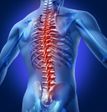AtlasPROfilax: a revolutionary method
Mulheim Institute of Diagnostic and Interventional Radiology
30. Mar, 2019
Mulheim Institute of Diagnostic and Interventional Radiology
William Shakespeare-Ring, 9-11, 45470 Mulheim/Ruhr, Germany.
The Mulheim Institute of Diagnostic and Interventional Radiology is one of the most advanced medical centres in Germany.
With more than 25 years of history the Institute offers the most sophisticated technologies for diagnosis and prevention.
One of the objectives of the Institute is the early diagnosis of disease to avoid the development into chronic states. A team of doctors with different specialities are utilised for this purpose.
Since 2005 the Mulheim Radiological Institute, directed by Dr. Med Rainer M M Seibel, has conducted several scientific imaging studies to determine the occurrence of atlanto-occipital dysfunction or cranio-caudal deviation of the Atlas.
The effectiveness of vibro-pressure stimulation for correcting cranio-caudal deviation of the atlas has also been investigated. The scientific imaging studies carried out at the Institute have confirmed that cranio-caudal deviation of the atlas exists in 98% of human beings. They have also confirmed that vibro-pressure stimulation to the upper cervical zone is effective and safe for the correction of this derangement.
A study by the Mulheim Institute of Diagnostic and Interventional Radiology in Germany
In 2006 the Mulheim Institute of Diagnostic and Interventional Radiology associated with the German University of Witten-Herdecke launched an independent study on R C Schumperli’s vibro-pressure technique. The objective of the study was not to determine the therapeutic effects of this technique but to assess the principal theory that ‘almost all human beings suffer a cranial-caudal deviation of the atlas with rotation and tilt. They also wanted to evaluate if vibro-pressure to the upper cervical spine was effective at correcting this condition.
The basis of the study was to determine radiologically the exact position of the atlas in respect to the occiput and the axis as well as a comparative examination before and after vibro-pressure stimulation.
The study had to determine if it is true that there is a congenital cranial-caudal deviation with rotation and tilt of the atlas in human beings and that correction of this condition using vibro-pressure stimulation is effective.
The study helped to identify three essential points:
1) The existence and effects of atlas malrotation.
2) The effectiveness of vibro-pressure stimulation.
3) Possible side effects of the application of the technique
Several patients were studied for five years using the latest Siemens MRI scanner, the Magnetom Symphony, and Siemens Somatom Sensation 64 3D CT scanner. The patients were submitted to the scans before and after applying the vibro-pressure stimulation. The study involved 114 patients aged from 4-82, average age 49.7 and gender – 59% women 41% men. The study was carried out without considering race, gender or age, and it lasted 5 years during which the following criteria was used:
1. Image examination of the upper cervical area using MRI and 3D CT scans prior to vibro-pressure stimulation.
2. Evaluation of the images from different angles and comprehensive analysis of the C0-C1-C2 area.
3. Implementation of vibro-pressure stimulation.
4. Examination with MRI and 3d CT scans after vibro-pressure stimulation.
5. Comparison of the images obtained before and after the therapy.
The technique was performed in the presence of the doctors responsible for the Radiological Institute just after the first image examination. Immediately afterwards in all the cases a second image examination was carried out under the same conditions (only approx. 40mins to an hour difference between the first and the second radiological examination).
Results and Conclusions of the Study
Of a total of 114 people examined, 112 presented prior to vibro-pressure stimulation with an incorrect position of the atlas, with cranial deviation and tilting and a significant reduction in articular contact and lack of embeddedness between the occipital condyles and the superior articular facets of the atlas.
Note – the majority of cases presented with the atlas in a left ventral rotated and left uptilted position. Right ventral rotation was significantly less frequent.
After completion of the vibro-pressure stimulation a comparison of the images showed an obvious change in the position of the atlas. The embeddedness of C0-C1 was anatomically correct and intra-articular contact between C0-C1 and C1-C2 was complete. A clear improvement was observed between the articular relation of the atlas and the axis as well as a general change in the position of the head.
1. Prior to vibro-pressure stimulation the imaging results of more than 98% of the cases showed mal rotation of the atlas with cranial-caudal deviation and a tilted position.
2. After vibro-pressure stimulation the malrotation of the atlas and the cranial-caudal deviation with tilt were shown to be corrected.
3. In subsequent examinations the correction of the atlas and the good position were maintained.
4. Such results open the door to new scientific investigations and wider studies not only radiological but especially the clinical implications of the atlasprofilax therapy.
The doctors at the Mulheim Radiological Institute did not observe any adverse effects during or after the application of vibro-pressure stimulation. In follow up sessions patients described and showed improvements such as increased mobility of the neck, better posture, improvement of joint discomfort, back ache or extremity pain and improvement of neurovascular problems such as vertigo, dizziness and headaches.
